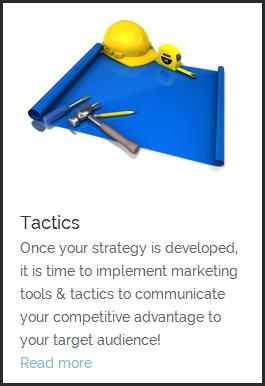Honest, ethical marketers use psychology to influence decision-making based on what customers truly need, not what they think the customers need or what they want the customers to need. This is the key difference that separates the good from the bad, but it’s not always easy to tell what’s ethical and what isn’t.

Honesty
Ethical marketing doesn’t make false or unverifiable claims. It doesn’t puff up or exaggerate. It doesn’t use subjective claims but rather backs up its claims with objective data. If you tell the truth and are transparent in your marketing, you’ll not only stay on the ethical side but also win over customers who will appreciate this honesty. They will come to trust you and be loyal.
Real Needs
Ethical marketing fulfills actual needs. It doesn’t invent a fake need and then try to sell the solution to it. This is why it’s important to know your customers well and understand their real needs. If your products and service address these needs, you won’t have trouble selling them. As long as your customers have this need, they’ll buy from you if you make a good case for your solutions.
Appropriate
Marketers sometimes like to be edgy in order to gain attention, but ethical marketing is never offensive, inappropriate, sexist, racist, or homophobic. As a guideline when reviewing your marketing materials, always ask yourself whether what you say could be taken the wrong way. If it could be taken the wrong way, it is likely that it will be by someone. Everything should be appropriate.
Kind to Competitors
Ethical marketers don’t attack competitors with smear campaigns or make false comparisons between their products and those of another company. Be careful of what claims you make and stick to showing positively how your offerings help meet customer needs, rather than how others don’t.
Rely on Feedback
Ethical marketing is driven by feedback from real customers. Decisions are based on what customers think and feel, rather than what the company believes its customers should think and feel.
What to Consider for Marketing Tactics
We have covered a dizzying array of marketing tactics related to different principles of psychology. Probably some of them set off a lightbulb in your brain saying, “We could use that” or “Our market would respond to that.” Here are some considerations to help you choose appropriate marketing tactics for your market.
What are the demographics of your target market?
You should be sure to know the basic demographics of your market. These include location, age, gender, income level, education level, interests and hobbies.
What are the psychographics of your target market?
You’ll need to do the research to truly understand what your own target market is thinking and feeling as it relates to your products and services.
This includes uncovering their problems, fears, pain points, and other emotions as they relate to your products and services. Conduct surveys, participate in forums, have discussions with current customers, and connect with your target market in as many places as possible to understand how they’re thinking and feeling.
Where is your market both online and off?
Identify the best marketing channels for reaching customers and explore how to use these marketing channels effectively.
What forms of content does your market prefer?
Gain an understanding of the content your target market prefers and how they use it. Look at which content is most shared, liked, visited, commented on, etc.
What kind of support does your market need?
What you do after a customer buys is just as important since it affects future purchases, the customer’s influence over other buyers, and brand image.
Keep in mind your brand
All of your tactics and marketing channels need to be consistent with your brand image. Review your brand’s vision, goals, and unique value proposition before selecting any tactics.
Be Flexible with Your Tactics
The best tactics to use vary, even for the same product and same customer. You may use one tactic at first contact but then shift to another at a later stage of your relationship with the customer. You may also have different tactics for different demographics of your market, or for different products.
As an example, let’s look at how different tactics could be employed at the five steps we outlined earlier in the buying process.

Recognition – Mere exposure can help your brand come to your customers’ minds when they feel the need for your products.
Information – You can use reciprocity to not only inform your customers about your brand, but also help them with various related problems.
Evaluation – Social influence can be used to show others who have purchased from you. Another example of reciprocity here would be to offer an impartial side-by-side comparison of your offerings and your competitors’ offerings.
Purchase – We discussed how the decoy effect could be used here. Ensuring that your customer service is excellent and the buying process is smooth and simple helps at this stage.
Post Purchase – Consistency can be used to show that you can continue meeting customers’ needs, as well as reminding them that they are your loyal fans.
Do you need to create and deploy a marketing strategy for your business? Let’s talk!








